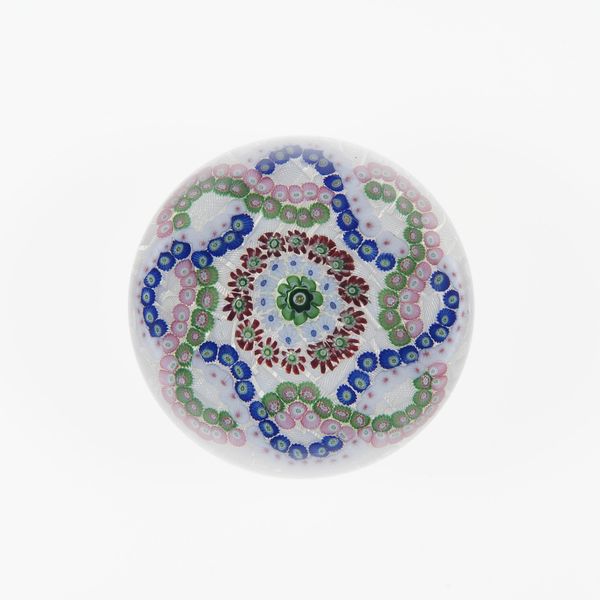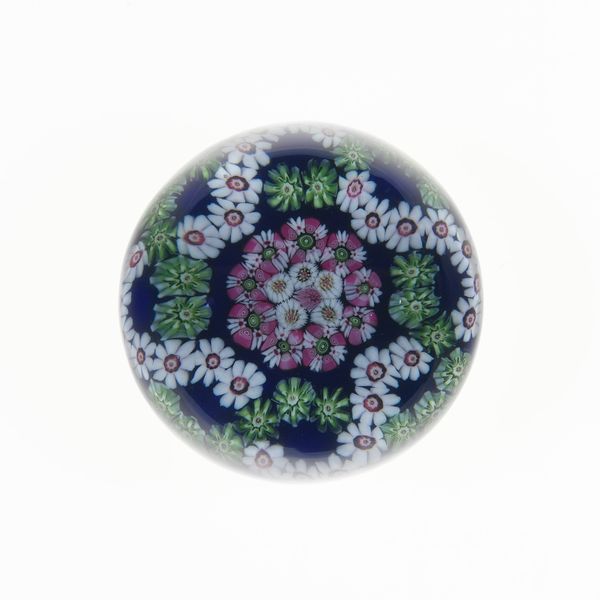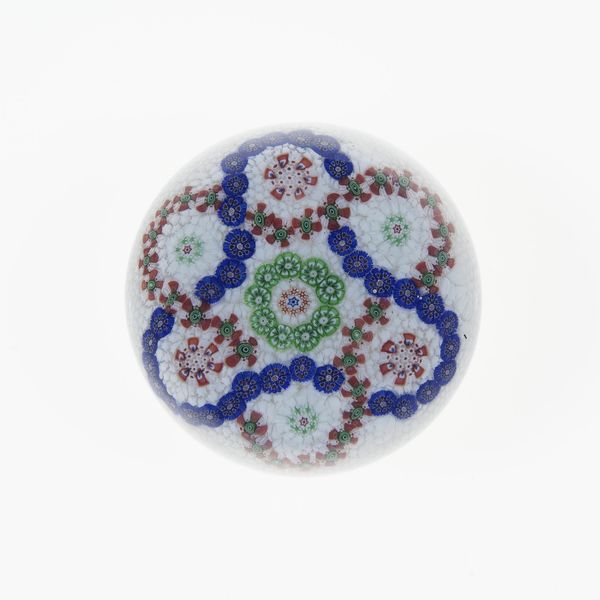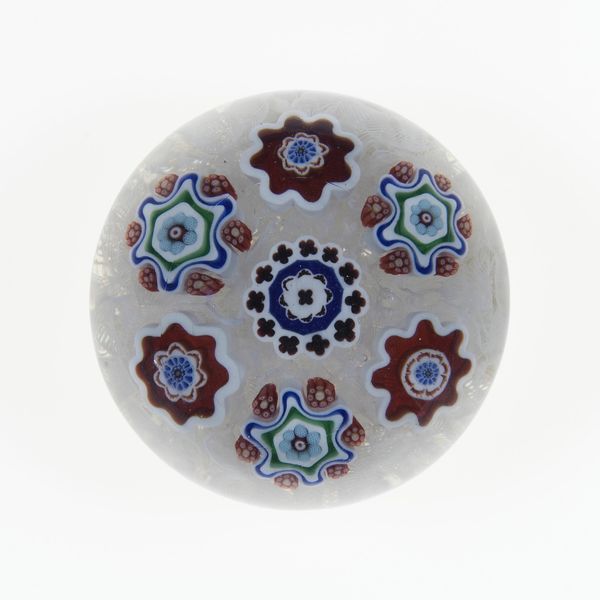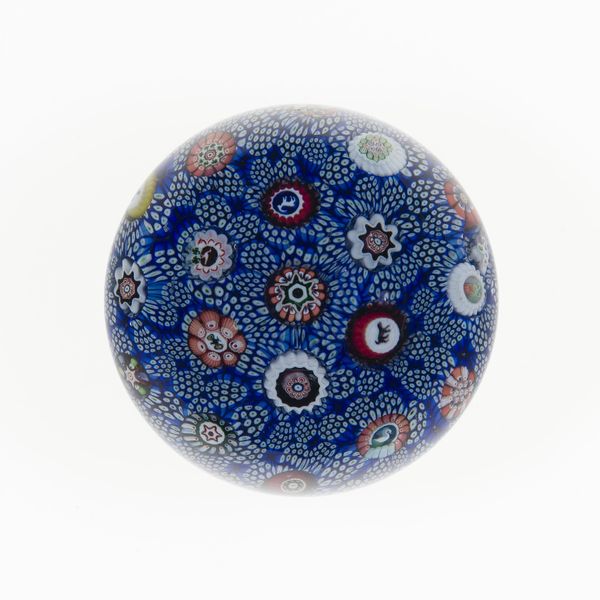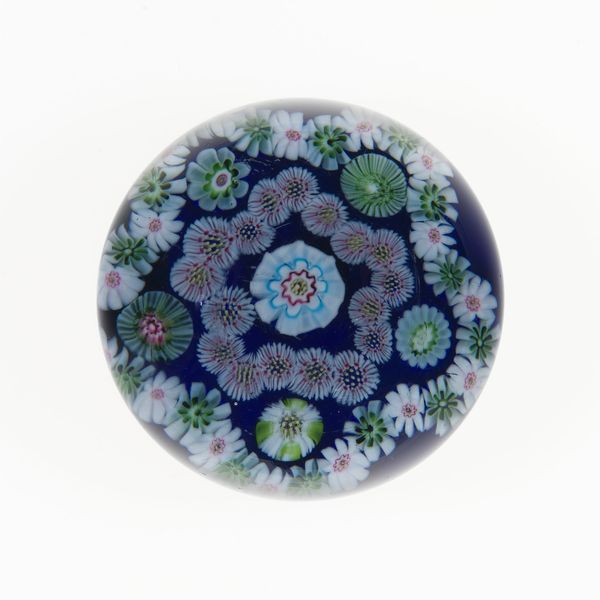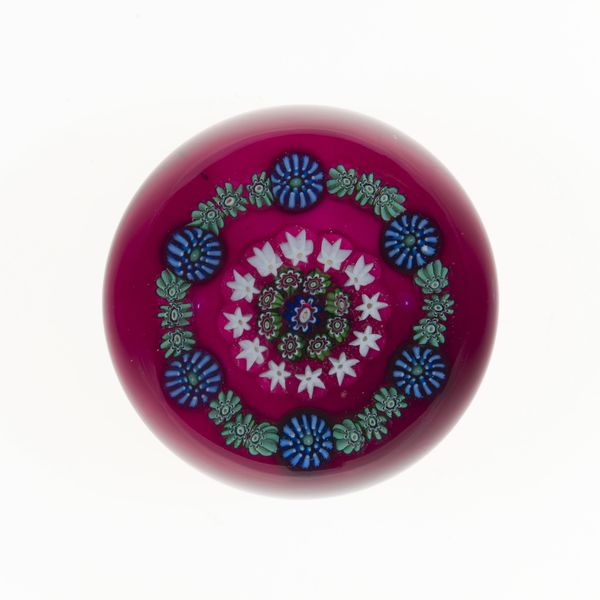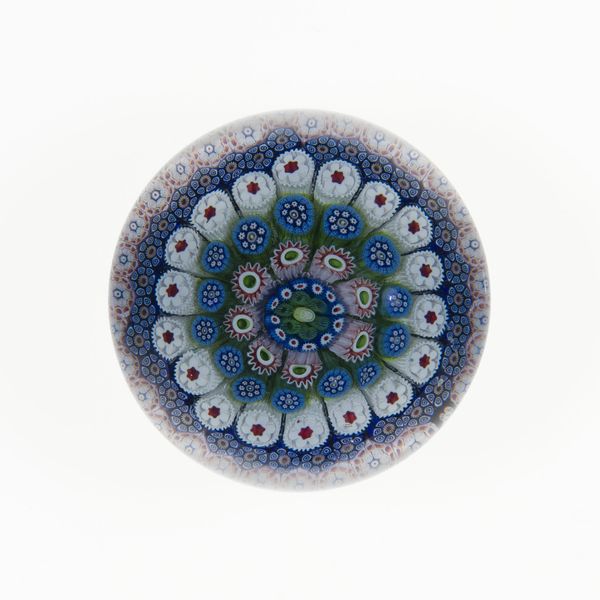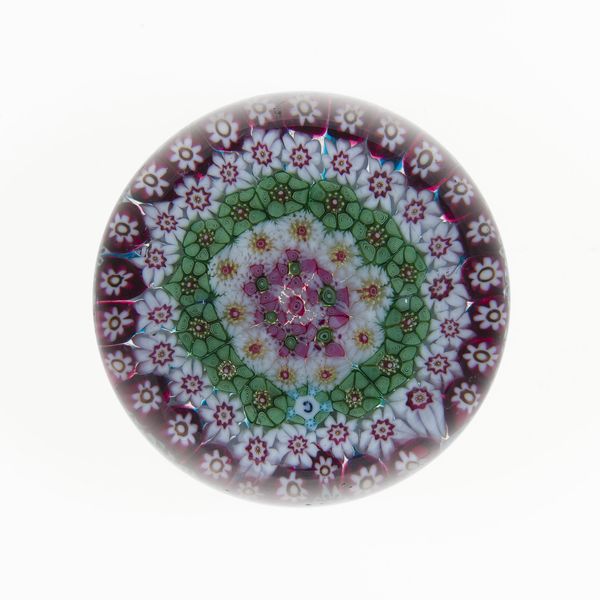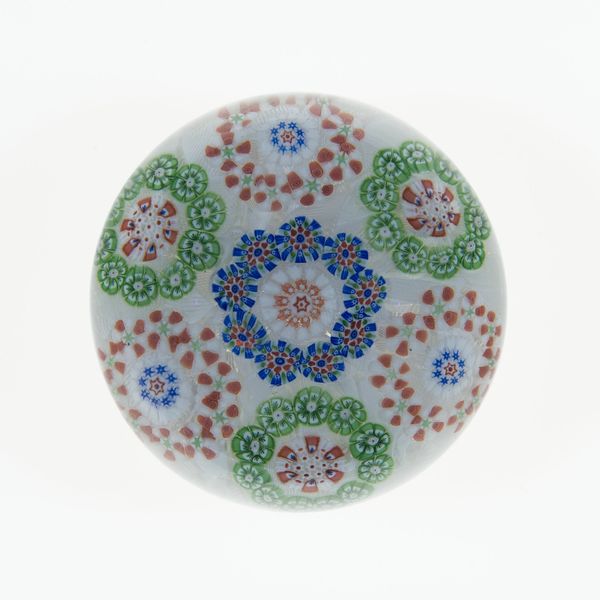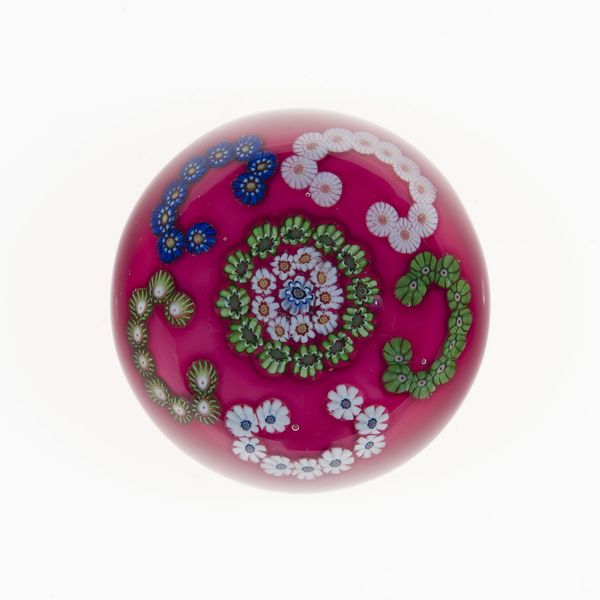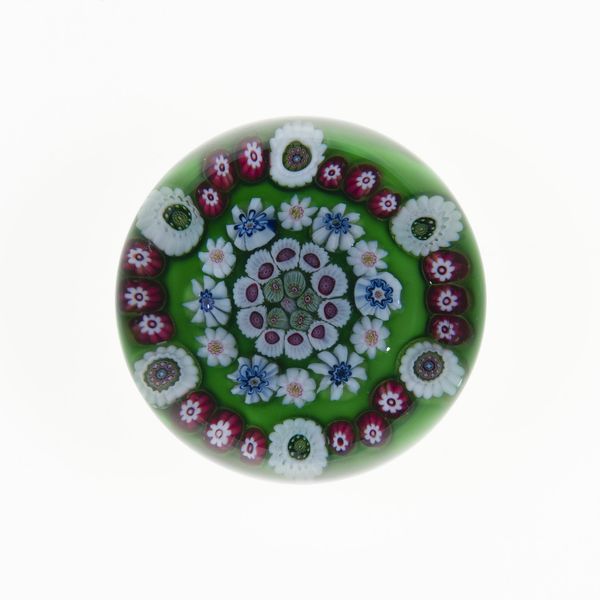
paper, glass
#
paper
#
glass
Dimensions: Diam. 7.6 cm (3 in.)
Copyright: Public Domain
Curator: This is “Paperweight,” crafted by the skilled artisans at Baccarat Glassworks, sometime between 1845 and 1860. You'll find this intricate piece nestled in the collection here at the Art Institute of Chicago. Editor: What strikes me immediately is its almost jewel-like quality, an enclosed world captured in glass, suspended. Curator: Precisely. Notice the arrangement of the millefiori, those meticulously crafted glass rods fused to create floral motifs. They create concentric rings within the orange matrix. Semiotically, the repetition evokes a sense of balance, almost meditative. Editor: And what were these paperweights about in their own time? Beyond holding papers in place, what was their role, especially for an atelier such as Baccarat? Curator: Paperweights, especially of this caliber, represented a unique confluence of industry, craft, and artistry during the mid-19th century. As the rise of correspondence increased demand for writing implements, paperweights became not only useful tools, but emblems of modernity and affluence, widely collected. Their elaborate production demonstrates the period's fascination with intricacy and miniaturization. Editor: Thinking of that process, one appreciates even more the intense control demanded by the glassmaker's medium; achieving such regularity in such material takes extraordinary expertise. What meaning could we read in the colors, say? The use of coral is so vibrant. Curator: Coral, given its etymological tie to the sea and to organic vitality, likely imbued a certain sophistication that many Victorian consumers associated with exotic lands and the natural sciences that studied them. Baccarat would also use a variety of colors as signifiers, their own particular brands and processes that became sought-after, as collectors competed with one another. Editor: Thinking about display contexts—such as museum acquisitions, collectors’ tables—paperweights allow for a focused gaze, one that allows an individual to appreciate their artistry. I leave this viewing experience reflecting on the labor, not just physical, but social, that goes into an object so easily seen. Curator: Absolutely. These spheres are little universes of encoded beauty, moments in which formal excellence captures a larger story.
Comments
No comments
Be the first to comment and join the conversation on the ultimate creative platform.
